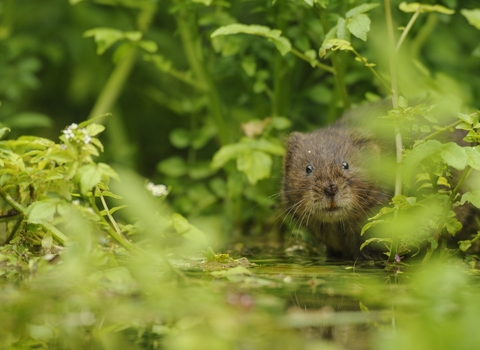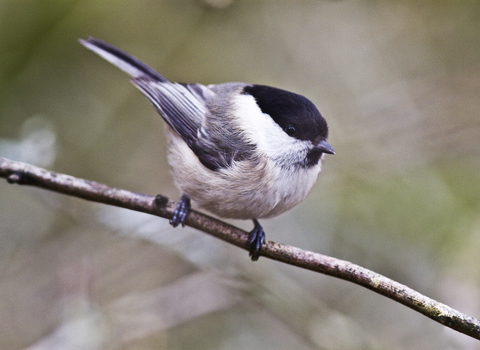Ecosystems permanently damaged. Irreplaceable habitats destroyed. Taxpayer's money spent on habitat restoration wasted. Wildlife extinctions at a local level.
This will be nature’s fate if UK Government doesn't rethink HS2.
A high-speed rail line connecting London to Manchester could, and should, have been a way to revolutionise green transport across England. The UK Government’s HS2 scheme received cross-party support and had the potential to help deliver on commitments to reverse the decline of wildlife and bring about nature's recovery.
But HS2 is failing nature.
In 2020, The Wildlife Trusts published What's the Damage? - a comprehensive assessment of the environmental impacts of HS2. Despite the risks to important wildlife habitats and of localised species extinctions, little has changed since. UK Government has pushed the scheme forward and the company responsible, HS2 Ltd, continues to demonstrate poor practice along the route.
To strengthen our case for action, we have published a new report that scrutinises the accuracy of HS2 Ltd's calculations around the risk to nature - and have found their data wanting. This new report, HS2 Double Jeopardy, reveals:
- Inconsistent mapping and modelling
- Wild space and habitats undervalued
- The benefits of new habitat creation valued as being higher than those of existing habitat
- Wildlife trapped between construction areas ignored
- Many ponds only partially counted, and huge numbers of trees not counted at all.
HS2 Ltd has not been held accountable for these miscalculations and nature is set to lose out.
Construction works to enable Phase One of the line has caused irreparable damage to precious wildlife sites already. With no evident plans in place to achieve the very best outcomes for nature, HS2 Ltd must take the worsening impacts seriously, before it is too late.
We continue to call on HS2 Ltd and UK Government to properly reflect on the scheme’s failings so far, listen to the warnings and advice from experts including Wildlife Trusts, and carefully rethink how to deliver the remaining works in order to ensure further catastrophic failings can be avoided.
It is critical that HS2 Ltd delivers – and improves on – its environmental mitigation and compensation commitments. It must embed the lessons learned from works so far, and go further to leave nature in a better state than before.
Only then can there be any hope of HS2 becoming a genuinely ‘green’ infrastructure project, that can support nature’s recovery instead of exacerbating nature loss.
Read the latest on HS2
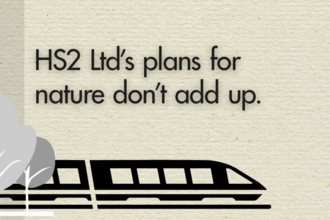
New report reveals that HS2 Ltd got its nature figures wrong
UK Government must require re-evaluation of nature loss and compensation say The Wildlife Trusts
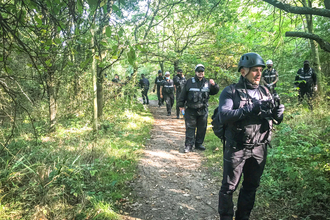
HS2 High Court bid threatens to crush public’s right to peaceful protest along the route
The Wildlife Trusts are concerned that HS2 Ltd is threatening to prevent people’s right to peaceful protest with a legal bid this week…
Nature and climate spared as Government cancels HS2 eastern leg to Leeds
The Wildlife Trusts applaud the Government’s decision to “take a fresh look” and scrap the High Speed 2 Phase 2b eastern leg to Leeds.…
HS2 and the environment
Hundreds of important habitats and special wild places are under threat from HS2. Ancient woodland, lakes, meadows, wildlife reserves, chalk streams and other important habitats are at risk. Yet, there has not been a Strategic Environmental Assessment and the compensation plans being put forward are not good enough.
UK Government and HS2 Ltd acknowledge that the route can't be delivered without extreme harm to the natural environment. Furthermore, the deep cut and divisive scar the route will cause along the length of England's habitats pose a genuine barrier to the urgent action required to recover nature and restore landscapes. The current approach to HS2 means that a Nature Recovery Network would be impossible.
The real and potential damage is too great - especially while we are facing an ecological and climate emergency. We need HS2 Ltd to stop and rethink.
We have discussed our concerns around the impacts on nature directly with HS2 Ltd, urging them to publish clear and detailed plans on how the scheme will meet HS2 Ltd’s obligations to achieve a ‘no net loss’ of biodiversity along the whole route, and further, a net gain in biodiversity.
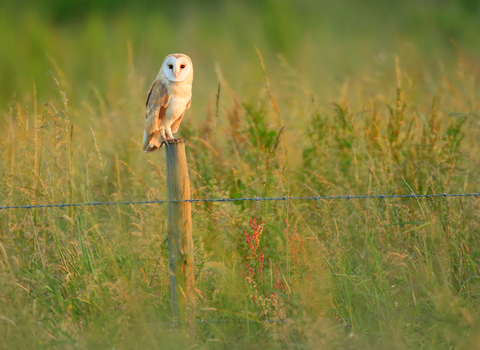
Jon Hawkins - Surrey Hills Photography
Wild Places at Risk
How HS2 is affecting nature and Wildlife Trusts along the routeOur history and action on HS2
Since the route was first announced in 2010, Wildlife Trusts have campaigned to defend wildlife and wild places at risk, trying to secure the best possible outcome for wildlife. The Wildlife Trusts in principle support sustainable transport solutions but current proposals for HS2 come at an unacceptable cost for our natural world, putting the homes of wildlife including barn owls and otters at risk.
Wildlife Trusts have actively engaged in the consultation stages of each phase to date, submitting both a collective response as a movement, and detailed responses from individual Wildlife Trusts with specifics about wildlife impacted in their area.
We cannot support the current flawed proposals for HS2, but as each Phase receives formal permission and specific legislation and special licensing continues to be approved, it should be designed to secure England's biggest nature restoration project too. In 2014, we set out an alternative proposal in a visionary report: 'A Greener Vision for HS2'.
In 2023, our audit revealed errors in HS2 Ltd's calculations. This means we will be losing a lot more wildlife than we were originally thought. However, if the Government acts now, there is still time to change the design of the route! We must see calculations redone correctly by HS2 Ltd to show how they will protect and restore some of our most precious habitats. Until then, all construction on HS2 must be stopped.
Our reports
Frustrated at the lack of action by HS2 Ltd and UK Government to improve plans for HS2 so that wildlife would not suffer, The Wildlife Trusts have published a third report in 2023, which assesses the nature loss calculations for the scheme. This report, HS2: Double Jeopardy, shows these calculations to be littered with mistakes, meaning even more wildlife is at risk than we knew. We are calling on Defra and the Department of Transport to pause the scheme whilst the data is re-evaluated and a proper mitigation plan put in place.
Our second report, What’s the Damage was published in 2020, working with partners in the Woodland Trust, National Trust and the Chilterns Conservation Board as well as using HS2 Ltd’s own data, to provide the first comprehensive route-wide evidence of the risks. Our report clearly showed how deep the scar HS2 would leave across England.
We urged the then Prime Minister, Boris Johnson, to use his power to stop and rethink the project. More than 66,800 people added their names to our open letter, which we delivered in person to Downing Street on Tuesday 4th February 2020. We were dismayed to hear the Prime Minister announce the Government's decision, less than a week later, to give HS2 in its current iteration the 'green signal', ignoring the evidence and our stark warnings.
A Greener Vision for HS2
Early on in the planning stages of HS2, The Wildlife Trusts developed A Greener Vision for HS2. This report provides the large-scale thinking lacking from current HS2 Ltd plans and if considered would provide the net gain for wildlife so vital for allowing our natural world to recover, at a fraction of the total cost of the scheme.
HS2 Ltd has proposed a Green Corridor along the route, which we welcome. But this is far from adequate and can only be seen as a start to delivering the more ambitious vision we have set out.
Greener Vision for HS2 - Summary Report
Greener Vision for HS2 - Full Report
HS2 Consultations
The Wildlife Trusts have responded to various consultations released on each of the planned phases of the HS2 route. Please contact your local Trust to request a copy of their consultation response.
What's the Damage?
What's the Damage?
HS2: Double Jeopardy
HS2; Double Jeopardy. An evidence review of HS2 Ltd’s ‘No Net Loss’ by The Wildlife Trusts
Keep up to speed with our mailing list
Sign up and you'll be the first to find out about how you can support our work on HS2.

